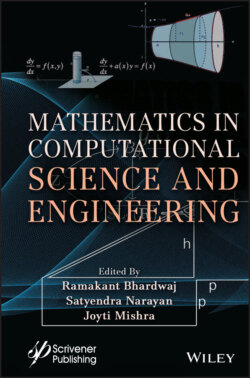Читать книгу Mathematics in Computational Science and Engineering - Группа авторов - Страница 54
2.9 Design Strategy for Monitoring Processes of IOR Projects, Geo-Engineering, and Geo-Environmental Problems
ОглавлениеThe IOR processes and integrity of Civil Engineering landfills, mine tailings retention ponds, brine ponds, saline water invasion cases, and other impoundment and waste storage structures must be monitored actively. Integrity cannot be predicted mathematically without uncertainty, nor can integrity be guaranteed unequivocally through the use of existing technology. In addition to these structures, there are a number of other situations where the migration of materials in the subsurface may be of interest. For example, the development of saline plumes underneath large waste embankments, such as in the potash mining industry in Saskatchewan; the migration of thermal plumes associated with hot structures in the ground; the migration of salt contaminated groundwater underneath Ministry of Transportation stockpiles; and so on. In all of these cases, providing that there ls a sufficient electrical resistivity contrast generated in a sufficiently large volume in the ground, the progression of the resistivity change through the porous or fractured medium can in principle be monitored using one of a variety of electrical techniques. One of these techniques, and the one with the most chance of successful and accurate resolution of the location and migration of materials of different resistivity in the pores, is the method of electrical impedance tomography using a fixed-electrode strategy and low frequency current excitation.
Among the complications associated with electrical techniques are the shallow annual variations because of saturation and hydraulic head changes due to rainfall, changes in the ground temperature as a result of seasonal effect, etc. Even if the physical issues of seasonal and other changes have been successfully addressed, and providing that there is a sufficient resistivity contrast, a major issue remains the successful mathematical modeling of the data to give quantitative information on the maximizing the sensitivity of an array to changes requires successful Installation of an appropriate electrode array and precise mathematical modeling.
The electrode array, which is proposed here for the three-dimensional Impedance tomography is a three-dimensional system of conducting points that can be treated as point sources in the ground. These points are Installed in various locations to maximize their usefulness. All the electrodes are linked together to a central switching system, where changes in resistivity between electrode pairs can be measured with time, or more Interestingly, changes in induced potential field gradient can be measured (Figure 2.4). In this method, an electrical field is induced by passing a strong current through a selected pair of electrodes (a dipole source), and measuring the induced voltage between all possible pairs of monitoring electrodes (sampling dipoles).
The mathematical model required to analyze this voltage data is one where resistivity changes or the potential gradient field changes can be analyzed to give the spatial location of plumes or bodies in the soil substructure that have different electrical properties than surrounding bodies, and are changing with time. The theory required to analyze a field of electrical potential gradients (voltage gradients) is now well developed and discussed herein in [3].
Figure 2.5 illustrates another similar strategy for monitoring EOR projects that requires hot water injection and stream injection or CO2 injection. Narayan [3] has demonstrated that the best approach is to take data at time one (T1) to create an initial base case; then, data at time 2 (T2) are taken and subtracted from those at T1 to give a difference in resistivities or potential gradients. This differenced data set is then analyzed to determine the changes that must have occurred between the two times to give rise to the changes in the observed data. This Is often referred to as the Inversion process in geophysics. Once the problem has been solved, the changes are added to the status at T1 to give the new status of the body that has a different electrical signature. The mathematical procedure requites considerable computer analysis. How it can be done, this is essentially known at this moment. Although there are refinements that can be made in the electrode array design and in the mathematical formulation of the problem. In order to give more precise and more rapid answers, the major elements are well understood and are in a sufficiently mature state.
Figure 2.4 Electrode array for landfill monitoring.
Figure 2.5 Electrode array for monitoring EOR/IOR processes using subsurface current dipole.
The mathematical problem is solved using what is called a forward optimization scheme. The differences between predicted values (differences) and observed values are minimized according to some rule. One of the most common techniques Is the minimization of the sum of the squares of the deviations, known as the least squares technique (L2-norm). This is by no means the only technique possible, there are techniques that minimize the absolute difference of the measurements, or other suitable functions. As well, there are a number of ways to accelerate the computational efficiency of such error minimization algorithms. The electrical monitoring technique should probably be used in all cases where there is a significant chance of a plume of different electrical resistivity being generated by a process.
